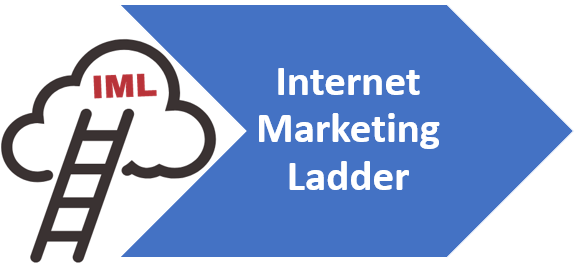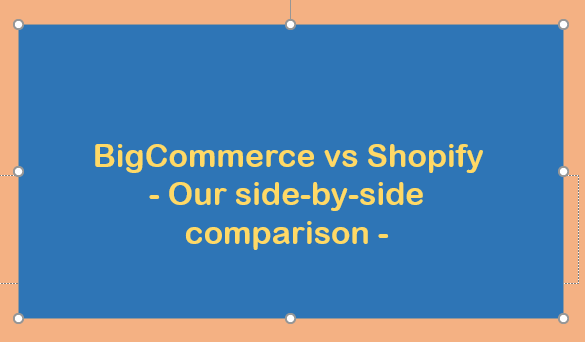Mastering Ecommerce Migration on WordPress
Ecommerce Migration on WordPress
In the evolving landscape of digital commerce, ecommerce migration is an essential process that every business should master. This process involves the transfer of crucial business components, such as product information, customer data, and transaction data, from one ecommerce platform to another. With the desire for better scalability, heightened security, and enhanced user experience, migrating to a new platform is a strategic move many businesses make. One of the most popular platforms businesses migrate to is WordPress – a versatile content management system renowned for its user-friendly features and robust ecommerce plugins, including WooCommerce, Easy Digital Downloads, and BigCommerce. Selecting the most suitable plugin is crucial in ensuring a successful ecommerce migration and the subsequent functionality of your online store.
Understanding Ecommerce Migration
Ecommerce Migration: A Key Pillar in Modern Digital Business
In a tech-based world where convenience is a prime currency, ecommerce has not only become an integral part of business, but also a compulsory evolution point for brick-and-mortar outlets. The continuous transmutation within this landscape calls for companies to step up their game – hence, the need for ecommerce migration. So, what exactly does it entail, and why does it carry such significance?
Ecommerce migration refers to the process of transferring an ecommerce store or any other online business element from one platform to another. It is no simple task. With aspects such as store data, customer data, product information, designs and templates, and more needing to be transitioned, it is a project that requires meticulous planning and execution.
In many ways, ecommerce migration is akin to moving from one physical store location to another. One has to ensure that all valuable assets are not only moved safely, but also placed strategically to simplify operations. Concerns about security and accessibility come into play as it involves sensitive information, making this procedure a threshold that needs to be crossed with utmost precision.
There are three main types of migrations that firms often consider. Content migration involves the transfer of non-product related information such as pages and blogs. Catalog migration is a maneuvering of product-related data, and platform migration refers to shifting the entire online store to another platform. Each approach has its significance, limitations, and implements, all of which firms should consider before choosing a route.
But why undertake this demanding process? For starters, as businesses grow and realize their full potential, capacity constraints emerge. A previously effective ecommerce platform might struggle to handle the increased web traffic, causing functionality issues and eventually impacting customer experience negatively.
Other instances may be triggered by evolving business needs such as expanded product lines or geographical coverage that the initial setup doesn’t support. In some cases, the migration results from the desire for enhanced customer experience. The introduction of more user-friendly interfaces, better mobile functionality, or advanced search capabilities necessitate a jump to a platform that accommodates these upgrades.
A significant advantage lies within the realms of data security. Superior platforms promise better security measures, protecting businesses from the increasing cybersecurity threats plaguing the online space. Therefore, migration not only resolves performance-related issues but also fosters a safer business environment.
Furthermore, today’s consumers demand seamless experiences across all touchpoints. A shift to a more sophisticated ecommerce platform delivers on this, thus driving customer loyalty and boosting sales.
While the process may seem daunting, tackle ecommerce migration with a well-defined strategy and proficient technical support to streamline it. Do extensive research, prepare for possible hiccups along the way, and never underestimate the input of experts. It may be a bumpy journey, but the agility and efficiencies gained from a successful migration are worth the resources. Intriguingly, for many businesses today, it’s not a matter of if they’ll migrate, but when. In the competitive digital sphere, adaptation and evolution are the keys to staying relevant and profitable.

Choosing a Suitable WordPress Ecommerce Plugin
Unleashing the Power of Ecommerce Plugins in WordPress
One cannot underscore enough the significance of a potent ecommerce plugin when it comes to establishing an efficient and captivating online store on your WordPress site. Remember, the key to unlocking a world of opportunities with WordPress lies in choosing the ideal ecommerce plugin.
Merely having an in-depth knowledge about ecommerce migration is not enough. The choice of an ecommerce plugin could very well be the turning point of your virtual enterprise. Consequently, it’s crucial to evaluate certain fundamental factors during this selection with a tech-enthusiast’s analytical mind:
- Compatibility: The chosen plugin must mesh seamlessly with your existing WordPress theme. Compatibility issues could fundamentally affect the performance and aesthetics of your online store, potentially hampering the user experience and damaging your brand’s reputation.
- Features: The abundance or lack thereof features in your plugin could spell success or doom for your store. Several ecommerce plugins boast a myriad of features – like multiple payment gateways, comprehensive inventory management, marketing tools, and extensive tax options – that boost store functionality and balance complex tasks efficiently.
- Cost: A tech enthusiast recognises that “free” doesn’t always mean better. With ecommerce plugins, this can not be more accurate. Paid versions often offer superior security, support, and features. However, the cost needs to balance with the value it offers to your business.
- Speed: The loading speed significantly influences the UX and SEO ranking. A plugin that slows down your website might drive potential customers away. Test the speed of the plugin during the trial phase to avoid any negative outcomes.
- Scalability: As your business grows, the ecommerce plugin needs to evolve correspondingly. Hence, select a plugin that is flexible enough to expand and handle your future business requirements.
- Security: In this age of rising cyber threats, a secure plugin is non-negotiable. Ensure that your chosen plugin complies with the latest PCI security standards and offers multi-layered security measures.
- Support: Even the most tech-savvy professionals might face issues with their plugin. Therefore, a robust customer service and support system is critical. Consider the support options such as live chat, phone support, email support, and online documentation before zeroing in on a plugin.
In summary, while the complexity of ecommerce plugins might seem daunting at first, a systematic approach simplifies the process. By focusing on these key features, one can be certain of making an informed and successful choice. After all, the overarching goal should be to create a seamless, dynamic, and secure shopping experience for every customer visiting your WordPress online store.
Remember, your ecommerce plugin isn’t just a tool; it’s the powerhouse driving your online business to new heights. Choose wisely. Choose strategically.

Pre-Migration Preparations
The process of ecommerce migration to WordPress begins long before pressing the “migrate” button.
Preparation, strategic planning, and readying the new environment are critical steps in ensuring a smooth transition, with minimal negative impact on business operations and customer experience.
Amidst these steps, significant importance should be assigned to examining the compatibility with WordPress themes. By nature, WordPress is incredibly flexible due to the availability of thousands of themes and plugins designed to customize the look and functionality of a site. Nonetheless, it’s indispensable to validate the absolute compatibility of the chosen ecommerce platform with the intended WordPress theme. This avoids negative customer experiences caused by clashing design elements or functionality issues, ensuring a visually appealing and user-friendly interface.
Similarly, careful attention should be given to the features of ecommerce plugins. Browsing through thousands of plugins can be overwhelming, yet utterly rewarding. Some of the essential features to consider include product management, payment gateways, shipping methods, sales tax control, reviews and ratings, and discount code capabilities. The plugin’s value lies in its ability to meet specific business needs and enhance customer experiences.
In the realm of ecommerce, the choice of plugin isn’t a matter to be solved by mere coin tosses. Cost considerations for ecommerce plugins come into the spotlight. However, don’t be swayed solely by the price tag. Value for money, in terms of functionality and adaptability, should guide the decision.
The significance of loading speed is another factor not to be disregarded. The goal is to woo customers, not shoo them away with slow-loading pages. Assuring optimal load speed isn’t only beneficial for the user experience, but it contributes to SEO ranking, which is instrumental for visibility in the saturated digital marketplace.
Furthermore, while thinking about the present is commendable, envisioning future business growth and the scalability of the ecommerce plugins is essential. The plugins should be equipped to adapt and cater to the volume as the business expands. This foresight saves resources, such as time and money by preventing future platform migrations.
Seemingly invisible, yet incredibly impactful, adequate security measures in ecommerce plugins must not be overlooked. With increasing cybersecurity threats, ensuring data integrity and security builds trust with customers and safeguards business reputation.
Lastly, consider the availability and quality of customer support for the ecommerce plugins. This support acts as a safety net during the migration process and helps resolve technical glitches post-migration. Round-the-clock customer service, extensive documentation, chat support, or forums could be potential support avenues.
In conclusion, prior preparation and strategic planning indeed pave the way for a smooth ecommerce migration to WordPress. Remember, this transition isn’t just a business change; it’s a decisive digital transformation.

The Migration Process
Now let’s delve deeper into the step-by-step process of actually migrating an ecommerce store to WordPress. This is a clear, logical progression that, if followed carefully, will ensure a successful migration with minimal disruption to the business operations.
First off, begin by backing up existing ecommerce store data. This essential step safeguards against potential loss of data during the migration process. Tools like BackupBuddy or UpdraftPlus can help automate this process ensuring data integrity and security.
Next, enlist a downtime notification service. During migration, the ecommerce store will likely experience downtime. By informing regular customers in advance or during the actual downtime, frustration can be minimized and customer relationships maintained.
The third step is to choose a WordPress ecommerce plugin. Plugins like WooCommerce, Easy Digital Downloads, and BigCommerce for WordPress offer unique features suited for different business needs. Evaluate based on the needs of the specific ecommerce venture.
After securing a WordPress ecommerce plugin, the next task is the actual data transfer. This stage involves moving products, customers, orders, and other related data from the existing platform to WordPress. This can be done manually or through automated migration tools like Cart2Cart or WP All Import.
For the fifth step, configuring settings comes into play. This involves setting shipping methods, payment gateways, and tax settings. Each setting needs to be tailored to the geographical location and target demographics of the business.
Next is the design stage. With WordPress, there’s full control over the visual aesthetics of the online store. Choose a suitable WordPress ecommerce theme or get one custom-built by experienced WordPress developers to ensure a unique, engaging user experience.
The penultimate stage is the critical task of testing. Verify the functionality of the site and check for potential errors or bugs. Examining links, APIs, payment gateways, contact forms, and overall site performance can prevent a multitude of issues before the site goes live.
Finally, it’s time to go live. Once all the earlier steps have been executed with precision and thoroughness, it’s time to launch the WordPress ecommerce site. It’s best practice to keep monitoring the site for any unforeseen issues that may come up after going live.
Keep in mind, the process of migration doesn’t end as soon as the new site goes live. It’s important to maintain vigilance and constantly keep an eye out for any bugs or issues that might arise, always striving for that optimal, seamless user experience.
By adhering to this progression, the migration to a WordPress ecommerce platform becomes a systematic process that offers an enhanced ecommerce experience, both for the business and its customers. Happy migrating!

Post-Migration Actions
High performance is a non-negotiable component of digital success in today’s hyper-competitive ecommerce landscape. Consequently, after completing a site migration to a platform like WordPress, steps must be taken to ensure optimal site performance.
Following a successful migration, immediate action should be on post-migration site optimization, focusing on both technical and user-experience facets of the website. Here’s what’s essential:
- Code Optimization: Minimizing and cleaning up the site’s coding structure aids in alleviating load times and streamlining processing flow. Redundant code, unused plugins or themes, and excess white spaces can all slow down a website significantly. It’s crucial to keep the code lean, clean, and organized.
- Image Optimization: High-resolution images improve user experience but can negatively influence loading speed. Efficient handling calls for image optimization – compressing file size without losing quality, using the correct formats, and implementing lazy loading. Tools like ShortPixel are useful here.
- Caching: In simple terms, caching is storing parts of the website on a user’s browser, so it loads quicker the next time they visit. WordPress plugins like W3 Total Cache or WP Super Cache can help achieve this.
- CDN Implementation: For global businesses, utilizing a Content Delivery Network (CDN) enhances site performance drastically. CDNs store site copies at multiple data centers worldwide, delivering content to users from their nearest location, thus reducing latency. Cloudflare and MaxCDN are popular choices.
- Database Optimization: A cluttered database can slow down an ecommerce website. Regularly cleaning and optimizing the database can help maintain top performance. WP-Optimize is a great plugin that can automate database clean-ups.
- Checking for 404 Errors: After migration, links may break, leading to 404 errors. These can harm the site’s SEO and user experience. Tools like Screaming Frog SEO Spider can audit the site for 404 errors.
- Mobile Optimization: Increasing mobile usage mandates a mobile-optimized site. Google’s mobile-first indexing accentuates its importance. Using responsive themes, compressing media, and testing on different devices can help achieve this.
- Site Speed: A vital determinant of user experience and SERP ranking, site speed has an enormous impact on performance. Tools like PageSpeed Insights or GTmetrix can provide deep insight and actionable recommendations for improvement.
- Monitoring & Analytics: Post-migration, it’s essential to track website performance regularly. Google Analytics, Google Search Console, and SEMRush provide comprehensive tracking data, which can inform ongoing optimization efforts.
Implementing these steps contributes to optimal site performance following ecommerce migration. Ultimately, consistent monitoring, testing, and tweaking based on tracking data will help to maintain peak performance. Remember – ecommerce migration is not a one-and-done event but a continual process. Adaptability is key in the digital realm. Tech enthusiasts know this to be true.

After meticulously planning and executing the migration process, several post-migration actions should be carried out to ensure the website’s performance and user experience are top-notch. These actions may involve quality assurance checks, performance testing, troubleshooting arising issues, and monitoring the ecommerce site’s functionality continuously. Updates and replacements may also be necessary, so be ready to adapt and modify as needed. Moreover, maintaining SEO rankings after migration should never be overlooked because they play an important role in the visibility and organic traffic of the online store. With these steps and strategies at your disposal, migrating your ecommerce to WordPress becomes less daunting and more efficient, propelling your business to its optimal potential in the digital marketplace.







